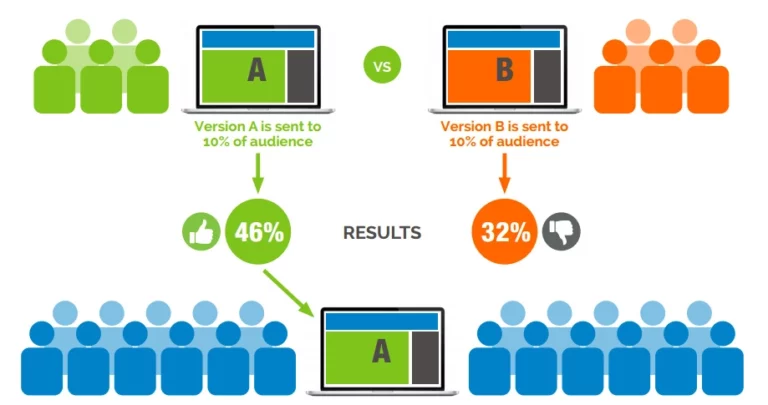
Introduction
Account-based marketing is not the most common phenomenon, but marketers in the know value it nonetheless for its fast results. If you are looking for a new marketing strategy to include in your campaign, look no further than ABM. Here are the seven ways to achieve results with account-based marketing.
#1 Find Out What Matters to Your Customers
First and foremost, you need to determine what it is that matters to your customers the most. If you don’t know what their interests, values, beliefs, and priorities are, you will not be able to provide them with an experience that will meet all the necessary criteria of well-developed account-based marketing.
At its core, account-based marketing is about focusing on specific accounts rather than trying to get everyone at once. This means that you will need to know as much as possible about this specific group of accounts you will be targeting in order to be able to create the necessary environment for them to purchase your products or services.
Before you start using account-based marketing, you need to do as much research about your target accounts as possible. Check what products they visited on your website and maybe even added to their Wishlist. How long did they browse through a certain section with your lipsticks or headbands or something else?
A good idea would also be to create customer personas even though you are actually dealing with a more specific group of potential customers rather than a huge target audience that you would segment. In other words, customer personas will help either way.
#2 Define Your Targeting Criteria
Though you might know everything about your target accounts, you still need to make sure that you define your targeting criteria as accurately as possible. The targeting criteria are meant to help you decide which accounts you will be targeting. So, in a way, the first and second tips are connected to each other.
For example, if you sell skincare products and you have a certain new release that you want to promote. Your targeting criteria might then include past customers that purchased similar products before because it will be easier to sell this new product to them as they will already be interested in it to an extent.
Targeting criteria should help you set aside the accounts that will be most suitable for you to target in your particular case. Remember that depending on the targeting criteria you choose, you will select certain accounts, and depending on the accounts you select, your chances of successfully selling your products or services will increase or decrease.
#3 Develop Specific Offers
The next step is to develop specific offers. The only way you will succeed in account-based marketing is if you are able to create offers that will be interesting for your selected accounts and will offer enough value for a reasonable price. In other words, specific orders are meant to be as appealing as possible for your target accounts.
For example, if your target accounts are, once again, interested in face creams, you will need to offer them face creams. But you will also have to make sure that the face creams you offer are relevant: they have the necessary properties, they come at a reasonable price, and perhaps they even have an option to be offered in a kit.
Whatever way you choose to offer your products, you should make sure that your target accounts will get interested in these specific offers and purchase your products or services as a result of your account-based marketing. Here are some tips for creating specific offers:
- Relevancy: The products you are offering to your target accounts are relevant to them because they bought similar products before or showed interest in similar products.
- Value: The products you are offering are valuable or the services you are offering provide enough value to your potential customers.
- Price: The prices of your products correspond to their quality and the value they have for your customers.
- Other: You have additional options for the products you are offering.
#4 Personalize User Experience
Though personalization is now considered more of a standard than a general trend, some marketers continue forgetting about the importance of personalized user experience. As mentioned earlier, account-based marketing is about targeting a smaller group with a more thought-through campaign instead of a huge audience with general assumptions.
There are different ways you can personalize user experience, but everything always starts from your website. You should track the actions of your site visitors and offer them special discounts for the products they just viewed, for example. Some other things you need to think about for personalization include:
- Content: The content you put out for your target accounts – whether these are the emails you send them or something else – has to be personalized just like you personalize your offers. You can do this by hiring a writer from a writing service reviews site like Best Writers Online who will have enough experience and the necessary skills to create such content.
- Offers: Not much to say about this because everything has been explained in the previous tip: your offers have to be personalized.
- Long-Term Relationships: Lastly, you need to maintain long-term relationships with your returning customers by providing them with all kinds of personalized bonuses, discounts, offers, and so on.
#5 Test Your Emails

Source : business2community.com
Though emails are seemingly a part of your content, they deserve a separate section about how to manage these emails properly – and more importantly, how to test your emails. Testing emails is an essential part of any account-based marketing strategy which means you will definitely need to go through this step at one point or another.
Testing emails allows you to better understand what works and what doesn’t. Though you will be personalizing them as much as possible, you will still have some of the more “general” emails to send out. You will need to pay particular attention to these.
Besides, testing your emails is not as difficult as you might think. First, you will need to consult your customer personas and create your emails. Then, you will need to send out these emails to experts or other employees to test them. Of course, you can simply consult experts to get feedback on these emails and whether or not they fit the customer personas you created. It comes down to your personal preferences as long as you test the emails in some way.
#6 Conduct Surveys
One of the best ways to find out what your customers think about you and what your target accounts need is by conducting regular surveys. These are usually done online and are based on a particular template. If you structure your surveys correctly and include all the necessary questions, you will be able to achieve outstanding results.
For example, surveys can assist you in checking how satisfied your customers are with your newest products that you sold to them with the help of account-based marketing. You can include such questions as “How much are you satisfied with the product?”, “Would you like to have additional features?”, “What concerns or issues do you have with the product?”, and so on. Make sure that the questions are not biased and have enough options for answers.
Google Forms is known to be one of the most popular tools for creating and sharing surveys thanks to its user-friendliness, but you can definitely find an alternative if Google Forms isn’t something you prefer using.
#7 Track Performance
Last but not least, you must track the performance of your account-based marketing campaign. This will enable you to see actual results and understand which parts of your strategy are lacking and need to be improved to perform better. Besides, tracking performance is important no matter what kind of marketing you use.
But you need to remember that tracking performance concerns several parts of your marketing and not just how big your revenue is. Here are the aspects you need to keep in check when using account-based marketing:
- Sales: What are the sales goals you have set yourself? How long does it take you to meet those goals? What is your revenue for a certain period of time? How many sales do you usually have to make to meet the goals?
- Engagement: How much traffic do you generate on your website? How many likes and comments do you get on your social media accounts? How many site visitors use your live chat option?
- Exposure: How often is your website or brand being mentioned on other websites and blogs? How many shout-outs do you get when you collaborate with others? How often do experts talk about your brand?
- Expenses: How much do you spend on every aspect of your marketing, production, and so on? Do you have any losses?
Final Thoughts
All in all, account-based marketing isn’t a very demanding marketing strategy, so adopting it will not be a difficult process. Use the tips in this article to help you successfully get started with this technique.
Our blog
Latest blog posts
Tool and strategies modern teams need to help their companies grow.

This comprehensive guide covers everything about service marketing—its unique chara...

Believe it or not, the concept of content sharing existed long before the Internet. I...

Sales analysis is essential to avoid inaccurate forecasts and identify improvement op...





